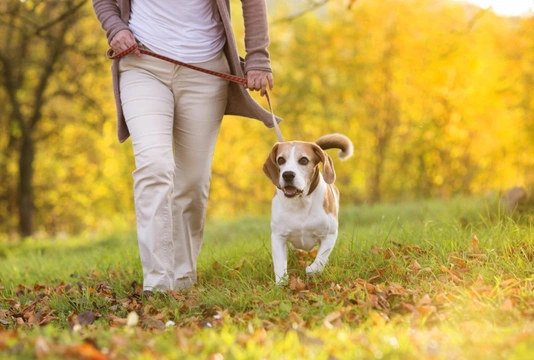
Safely walking and socialising a blind dog
Dogs that have very poor eyesight or that are even completely blind can and usually do lead full, happy lives, with the right care and management. Unlike us humans, the sense of sight is not the sense that dogs rely upon the most, or use to the greatest effect – for dogs, this is their sense of smell, which means that while a loss of vision can of course be restrictive, it is not an effective end to your dog’s ability to lead a normal life.
However, every element of caring for a blind dog needs to take into account the limitations of their blindness or vision problems – whilst still allowing your dog to lead a full life, manifest normal behaviours, and get all of the exercise and socialisation that they need. Walking a blind dog and socialising them with others are both entirely possible – but as with other aspects of caring for a blind dog, they need to be approached carefully.
In this article, we will share some tips and guidance on how to walk and socialise a blind dog safely and effectively. Read on to learn more.
Familiar routes
Whilst dogs like variety and going to new places, when it comes to blind dogs and their regular exercise, it is much better to stick to familiar routes that your dog knows or can get to know, and which can help them to maintain a sense of comfort and orientation.
Many blind dogs that are in familiar areas will walk very confidently to the point that others may not even realise that they are blind, which can be enhanced by choosing routes that are low on obstacles and hazards, and familiar to your dog.
Command responsiveness
In order to walk a blind dog safely along a road, familiar route or anywhere else, they must be well behaved and responsive to commands. They must stop when you tell them to, and ideally, learn to recognise words for certain types of hazards and obstacles such as steps.
Additionally, make use of the navigational aids that are out there in the environment designed to assists blind people – such as the raised bumps at the edges of pavements on road crossings, and teach your dog that when they feel the change of the new surface, they stop and wait for the instruction to proceed or cross.
Scout out potential hazards
Before you take your dog to a park or along a new route, walk it on your own to identify potential obstacles or hazards that may confuse or challenge your dog, and work out how you will address them before you get your dog there.
Also, be alert to what is up ahead even on familiar routes, as things can and do change over time.
Avoid busy times
Walking your dog at rush hour or when dog parks are likely to be at their busiest increases the risks for blind dogs, as well as producing a lot of additional stimulus to deal with.
Try to walk your dog and take them to parks or other areas to socialise when the roads and wider area will be quieter and less populous.
Seek a fully enclosed park
For off-lead explorations, a fully enclosed park is essential for a blind dog, to ensure that they do not accidentally wander out or get lost. Most bespoke-designed dog parks are fully enclosed and use corral gates for security, but you should always double-check before letting your dog off the lead.
Keep your dog in sight and reasonably close when off the lead
When your blind dog is off the lead, you should keep them in sight at all times, and not let them roam or run too far from you, in order to keep them safe. However, it is also a good idea to give them some space and distance to explore independently, while remaining within earshot or a short straight line away if you need to call them back.
Let other dog owners know your dog is blind
Socialising with other dogs comes naturally to both blind and normally sighted dogs, and allowing your blind dog to play with others when this is safe and viable is a great idea. Let other dog owners know that your dog is blind so that they can keep an eye on their own dog, and have the necessary context to assess the interactions between the dogs.
Avoid busy and rowdy dog parks
Playing with other dogs regularly can really help a blind dog to lead a normal life and manifest their natural behaviours, but rowdy or very busy dog parks or those where even one or two dogs are unruly or not well behaved are bad choices for socialising a blind dog.
Try to stick to smaller, quieter parks and ideally, areas where you will begin to see the same set of dogs and owners each day that your dog can get to know.



